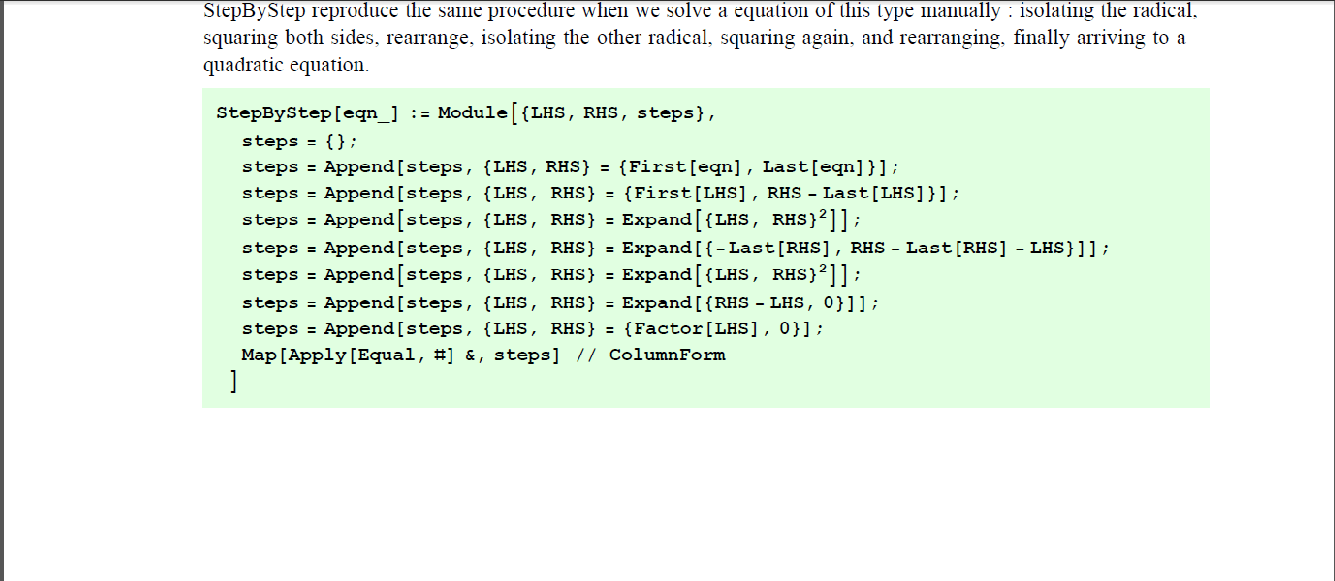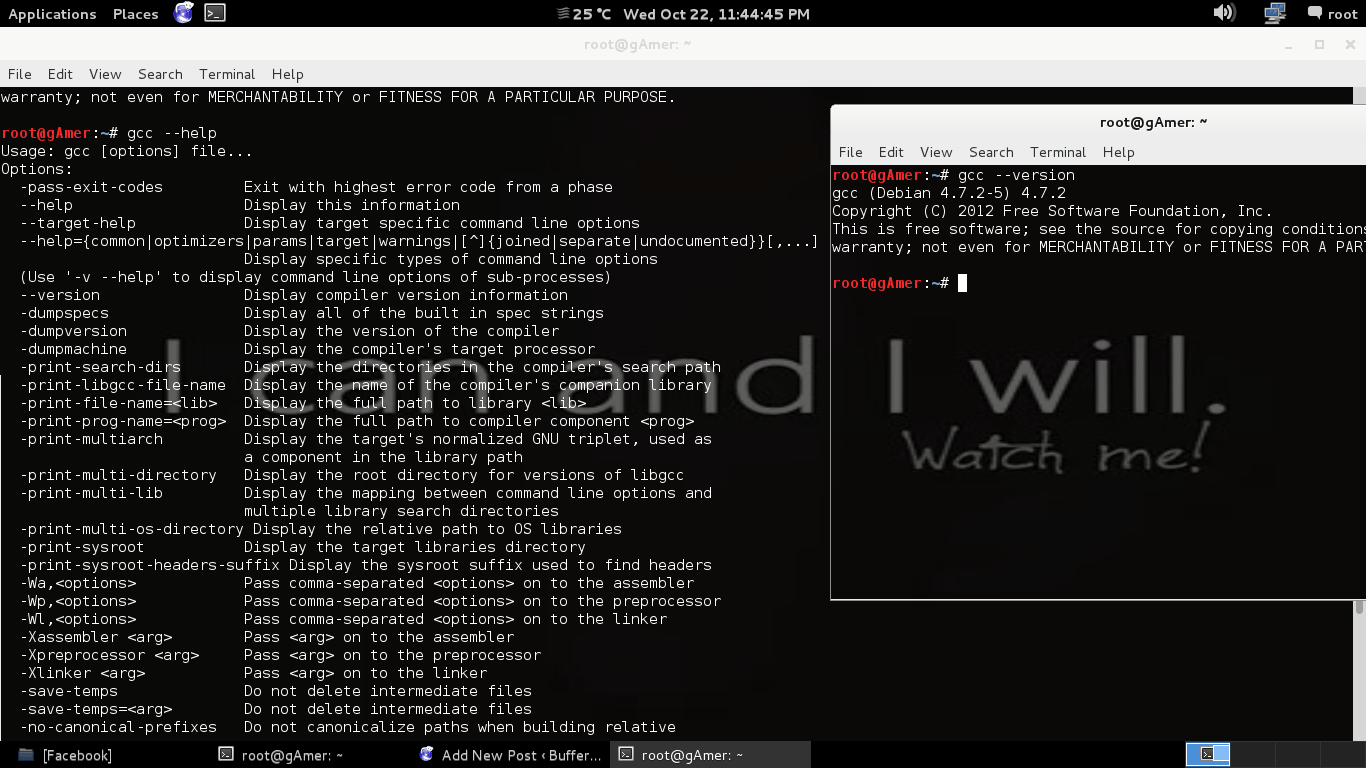This is a guest post by Francisco Javier García Capitán on Generating equation with radicals
RationalToString converts a number into a string. The number can be an integer or a fraction. It is used by ListToString.
Examples :
RationalToString[4]
x=4,
RationalToString[5/2]
x=5/2,
ListToString converts a list of numbers into a string. It is used to show the solution(s) of an equation.
Examples :
ListToString[{4}]
x=4.
ListToString[{4,5/2}]
x=4, x=5/2.
GenerateRadical[x0] returns a radical of the form where √ax + b are choosen at random and having an integer value when x=x0. The idea is the generation of equation with integer solutions. We first generate the value total = a x0 + b, then we generate a and finally, b
Example: We use Table to get a list of eight radicals that have an integer value when x=5.
Table[GenerateRadical[5],{8}]
{ √-9+ 2x ,√ 5 √x ,√15+ 2 x ,√4+x ,√-4+4x ,√-6+3 x , √1+3 x ,√-4+x }
GenerateRadical[x0] returns an equation of the form c1 +c2 = d. We can specify a range for the values of the coefficients c1 and c2. We avoid the case c1=c2=0 by manually changing it to c1=1 c2=0.
Example :
GenerateEquation[2,{-3,3}]
-2 +2 0
SolvedEquation returns a pair {eqn, sols} formed by an equation and a string containing the solution(s) of the equation.
SolvedEquation[{-5,5},{-3,3}]
{+3 10,x=0.}
EquationList returns a numbered list of equations with their solutions.
Off[Solve::ifun]
SolvedEquation
{
- {3√3+x +2√4+5x = 12, x=1.},
- {-√29+5x = --3, x=-4.},
- {-2√-11+3x +√-16+5x, x=4.}
}
StepByStep reproduce the same procedure when we solve a equation of this type manually : isolating the radical, squaring both sides, rearrange, isolating the other radical, squaring again, and rearranging, finally arriving to a quadratic equation.
StepByStep[√2+x -3√17+4x = -13]
√2+x -3√17+4x = -13
√2+x = -13 + 3√17+4x
2+x = 322 + 36x – 78√17+4x
78√17+4x 320 + 35x
103 428 + 24 336 x == 102 400 + 22 400 x 1225 x^2
-1028 – 1936 x + 1225 x^2 = 0
(-2+ x) (514 + 1225 x) = 0




